
Street Balbi (Via Balbi) is one of the main streets of the center of Genoa, named after the aristocratic Genoese family of Balbi.
In 2006, via Garibaldi, a UNESCO world heritage site.
The via Balbi was founded by the Genoese aristocracy during the Renaissance, and refers to the so-called "New streets" (Strade Nuove).
The street was built between 1601 and 1620 as a result of cooperation between the city authorities and the family of Genoese bankers Balbi, in the days when the city was expanding to the North, and the local aristocracy left the medieval streets of Genoa, building on the newly formed streets, elegant palaces and villas. A classic example of "new streets" with elegant historical palaces of Genoa is the via Garibaldi, located 450 metres from the South-Eastern end of the street Balbi.
The length of the street Balbi is 600 metres away. Stretches of the via from the square della Nunziata (Piazza della Nunziata) to Aquaverde square (Piazza Acquaverde), where you can find the monument to Christopher Columbus and the railway station Principe.
Photos of the area of Aquaverde

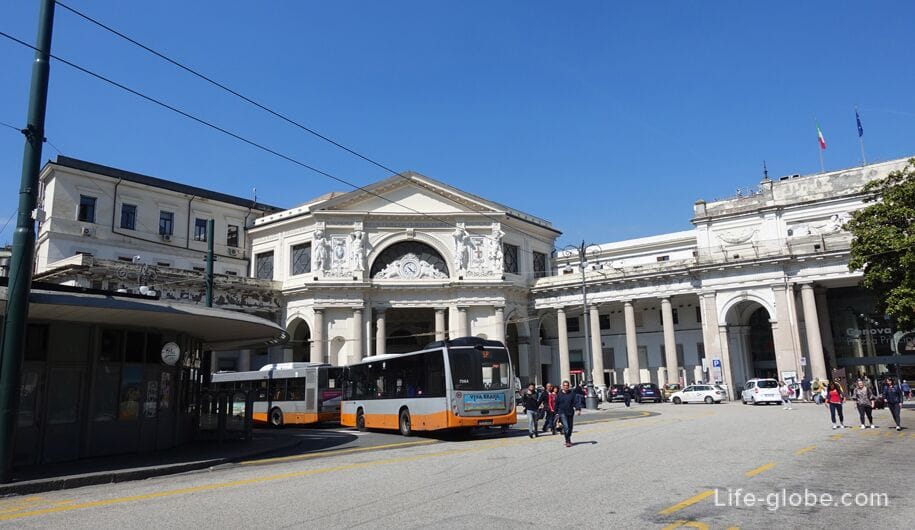
Photos of Balbi street from Piazza Aquaverde
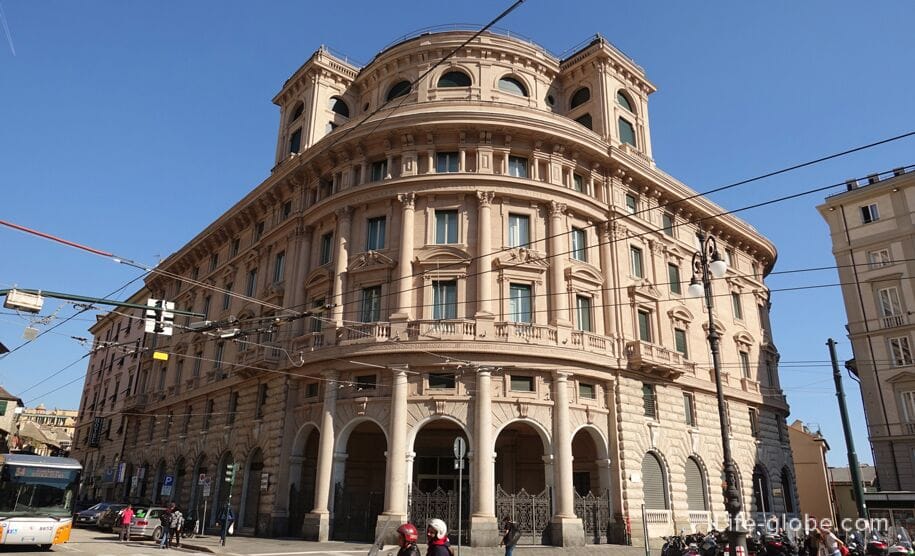
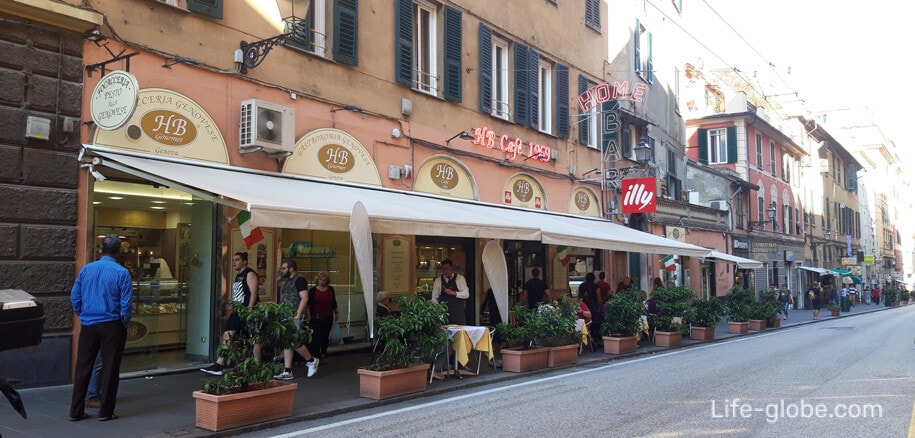
In this part of the street Balbi there are several hotels: 4-star hotel Continental, 3-star Britannia, a 3-star hotel Nuovo Nord, the 2-star Twenty Nine , etc.
All accommodation in Genoa, including on the street Balbi and close itself, you can view and book here
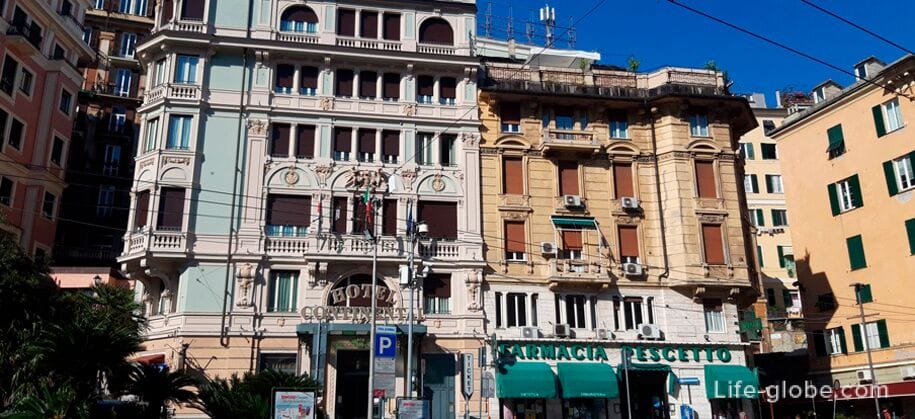
Walking down the street Balbi, you can see historical monuments located on the exhaust from via Balbi streets, for example: I Truogoli Vecchi and arch St. Brigid (Arco di Santa Brigida).
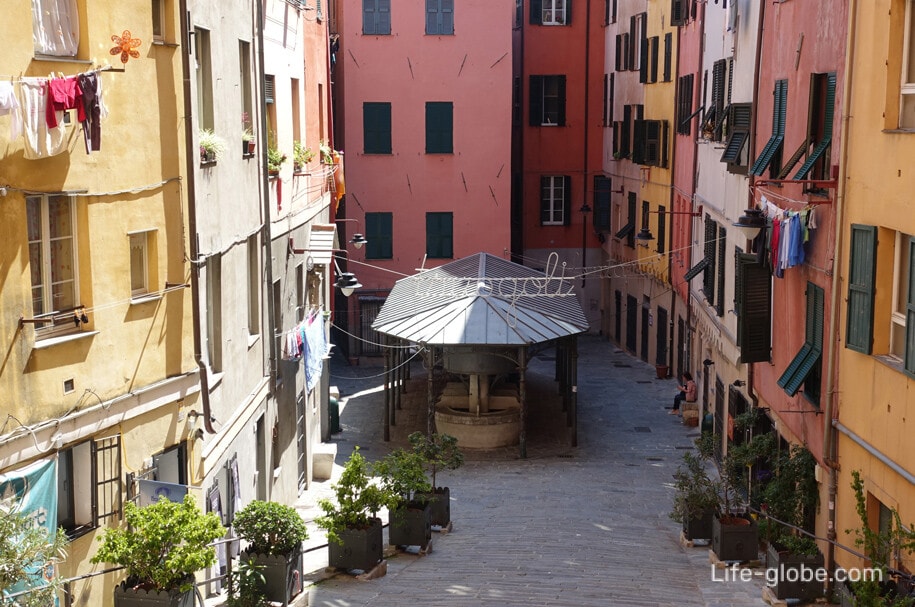

Or the Palace of gio Agostino Balbi (Palazzo Durazzo-Pallavicini / the Palazzo of Gio Agostino Balbi) is located on the street Balbi at number 1.
The house was designed by architect Bartolomeo Bianco for Agostino Balbi. The building has the wings of the loggia, creating a stunning visual effect.
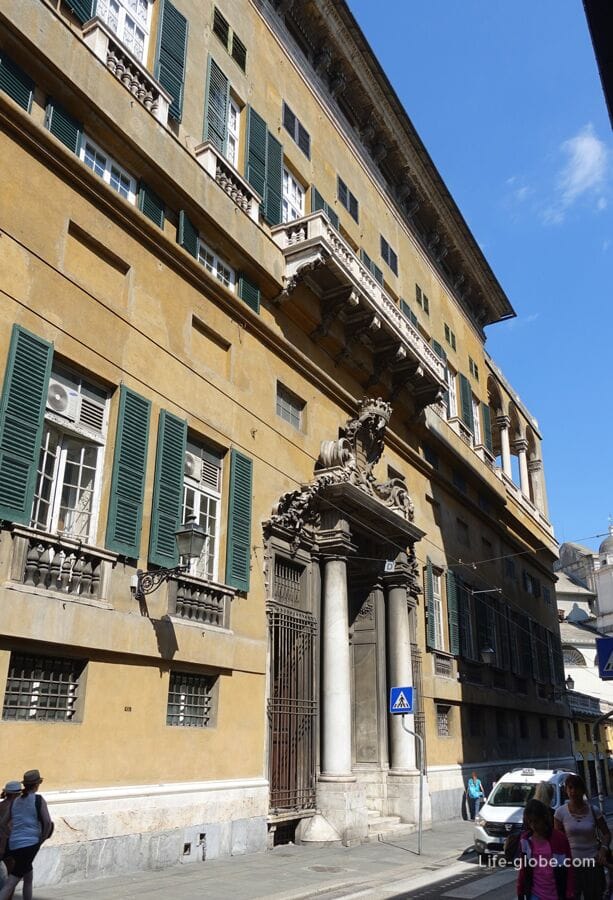
Or the Palace Balbi-Cattaneo (Palazzo Gio Francesco Balbi / palazzo Balbi Cattaneo) – the former family residence Balbi, located number 2.
It was the oldest of the palaces of the Balbi family, was built in the 16th century on pre-existing medieval buildings.
The building was expanded in the first half of the 17th century. In the late 18th century the house passed to the family Cattaneo Della Volta, what has a double name.
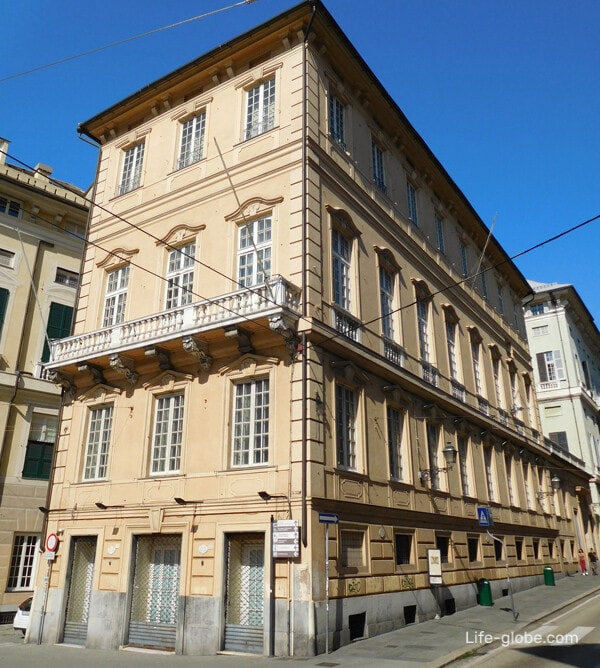
Or the Palace of Giacomo and Pantaleo Balbi (Palazzo Balbi-Senarega / Palazzo Giacomo and Pantaleo Balbi e) is at number 4.
The house was designed for the brothers Giacomo and Pantaleo Balbi in 1620-ies.
The building has frescoes, the courtyard and the Nymphaeum. Now in the walls of the Palace houses the faculty of literature and philosophy at the Genoa University.

Or the Raja Palace (Palazzo Francesco Maria Balbi Piovera / Palazzo Raggio) is at number 6.
The building was built between 1657 and 1665 years on the initiative of Francesca Maria Balbi.
By the will of Edilio Rajo, shipowner and industrialist who bought the building in 1870, the interior decorations had been completely redone.

University library.
The former Church of the Jesuit College (Chiesa dei Santi Gerolamo e Francesco Saverio) was built between 1650 and 1658 the years, with one nave and four side chapels.
Today, the walls of the Church here is part of the University library. The building is located at number 3 on the street Balbi.

Or Jesuit College, also known as the Palace of the University of Genoa (Palazzo Dell'universita di Genova) is located at number 5.
The building was created in the 1730s years Bartolomeo Bianco Jesuit College, funded by the Balbi family.
Now the Palace is the seat of the rectorate and the faculties of law and political Sciences of the University of Genoa.
College gardens, designed in the late eighteenth century as a series of terraces descending down the slope of Perminute, by architect Emanuele Tagliafichi, was later transformed into the Botanical garden and is still used for this purpose by the University.
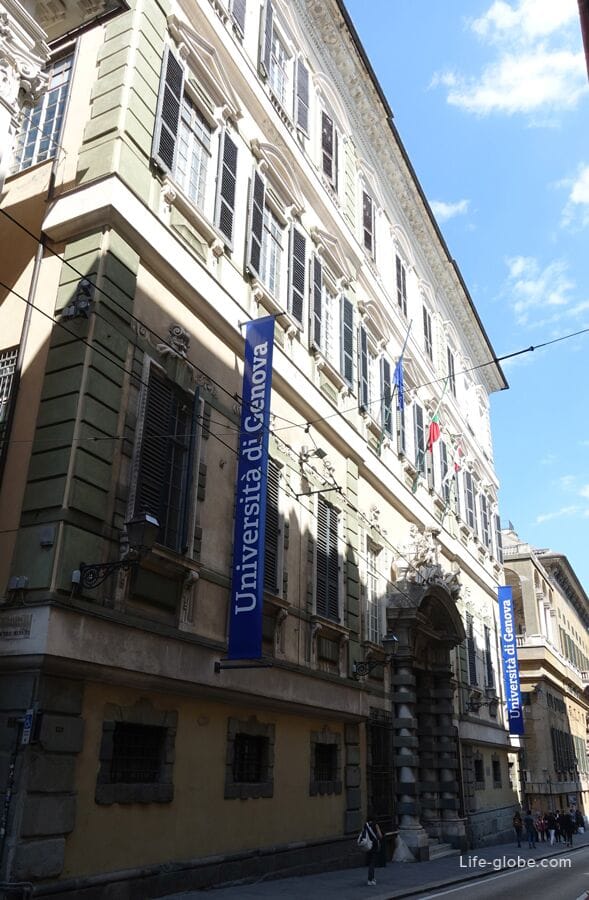
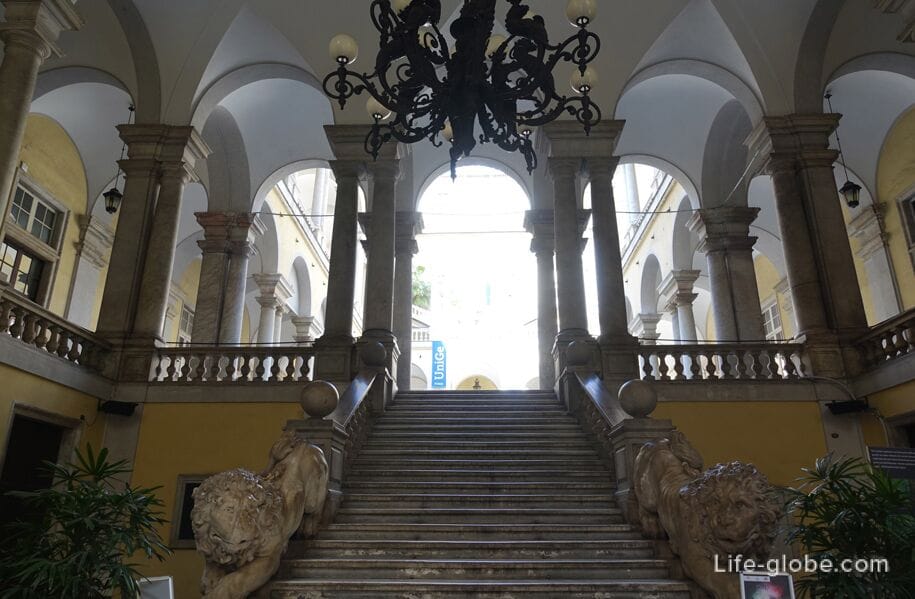
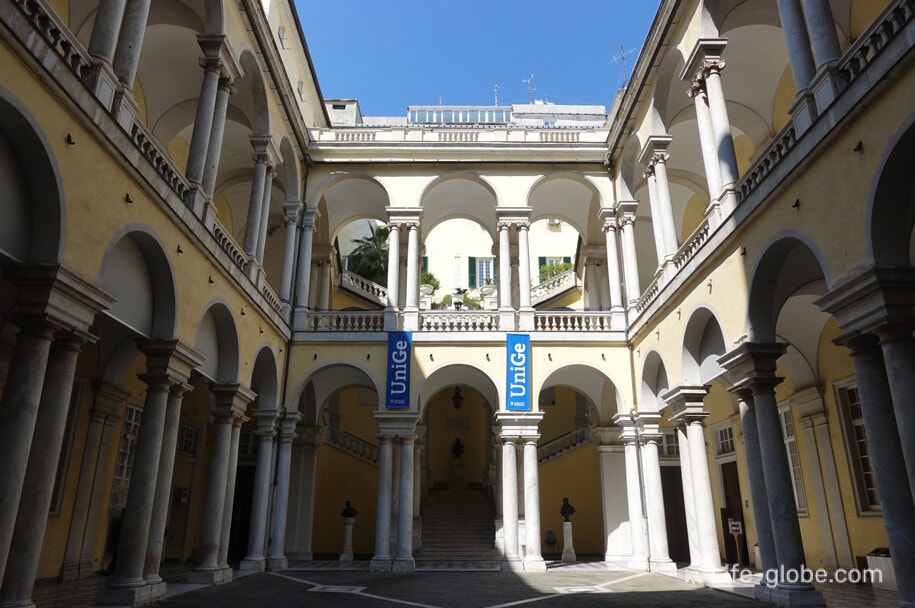
Church (Chiesa dei Santi Vittore e Carlo), located at number 7, was designed in 1629 by the architect Bartolomeo Bianco, and completed in 1635 the monks-Carmelites.
The facade of 1743 was built by Gerolamo Durazzo. Later the Church interior was decorated with marble and stucco.
The magnificent Baroque interior of the Church preserves a rich heritage of paintings and statues.
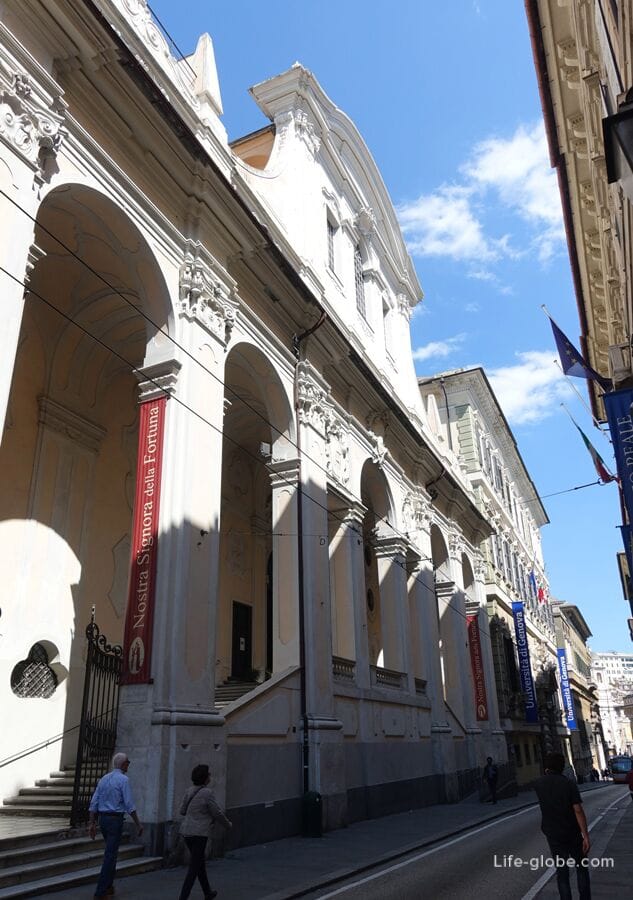

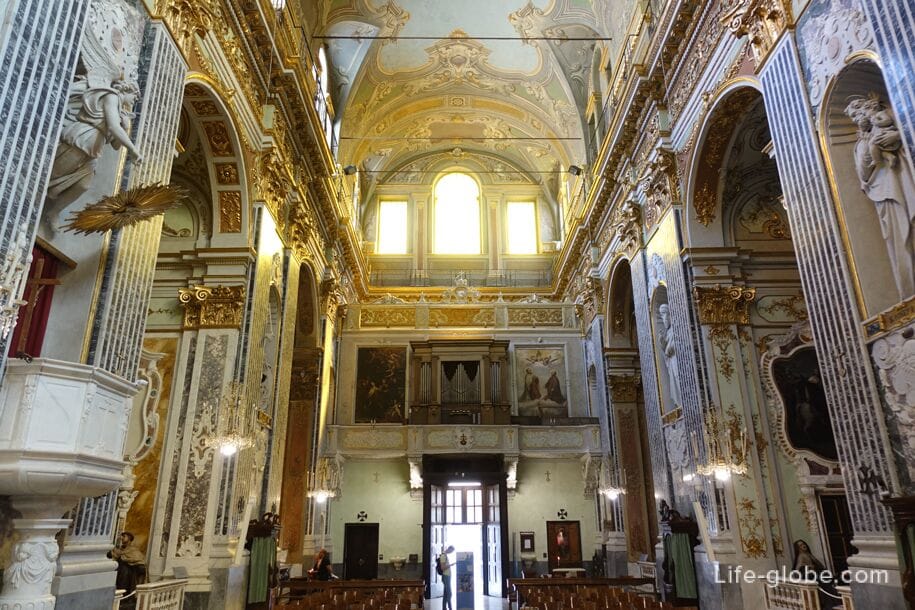
The Palazzo Reale (Palazzo Reale) is one of the most significant and largest historic buildings of Genoa. Is at number 10.
The construction of the building started Stefano Balbi and continued by his son Giovanni Battista, in the period from 1643 to 1650 years, according to the architects pier Francesco Cantone and Michele Monina Giovanni Angelo Falcone.
In 1677, the Palace was bought by the Durazzo family, which expanded it by including the adjacent building.
The hanging garden of the Palace was the last part of the project ascribed to Carlo Fontana, which was implemented in the second decade of the eighteenth century.
The house became a Royal Palace in 1824, when it was purchased by sawayama.
Currently, the walls of the Palace is the Museum of the Palazzo Reale consisting of a historic house, garden and art gallery, which is one of the largest in Genoa.
The Museum permanent exhibition halls and rooms decorated with frescoes, stucco work, paintings, sculptures and furniture belonging to aristocratic and Royal families who lived in the Palace, and replaced.
Site of Royal Palace Museum: palazzorealegenova
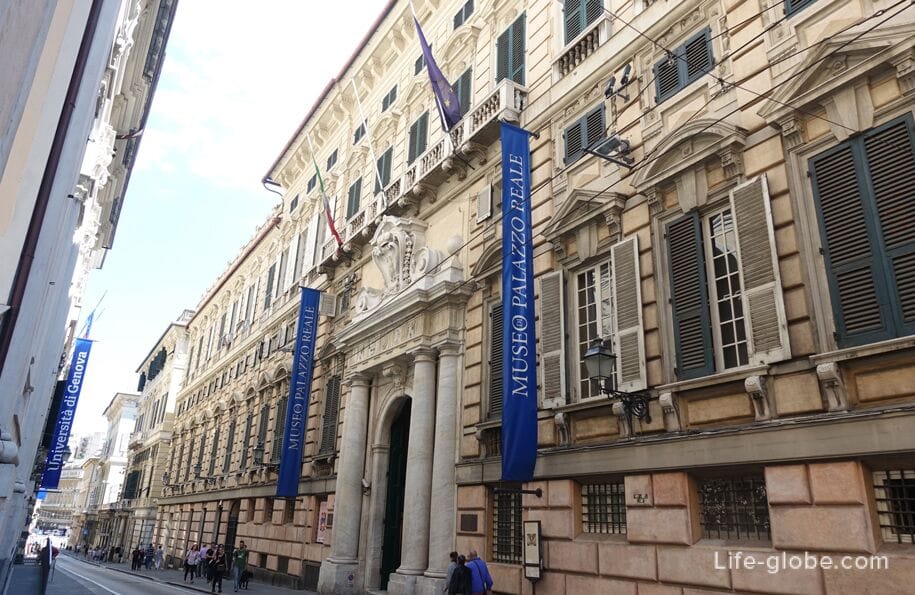
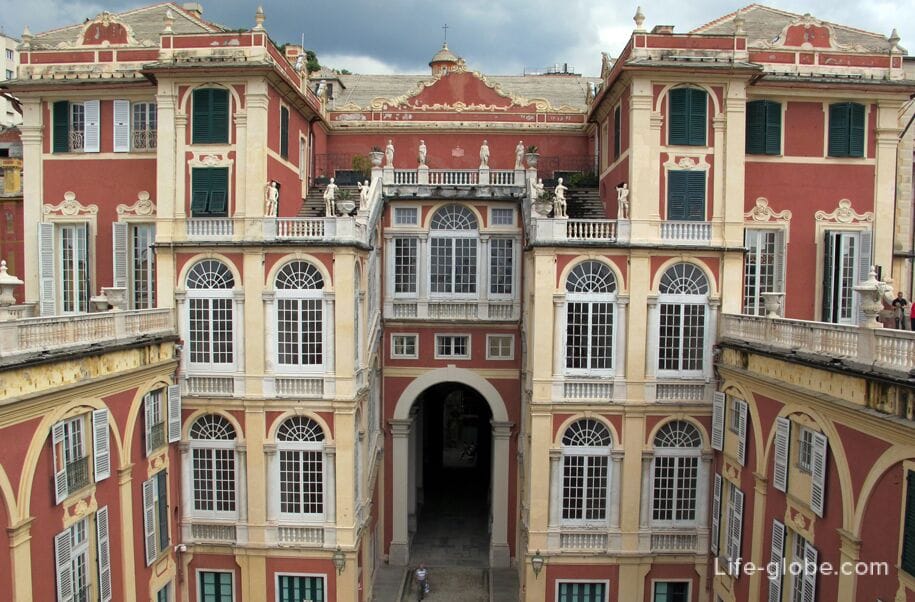
All accommodation facilities in Genoa, including in the city center, near the beaches and more remote from them, can be viewed and booked here